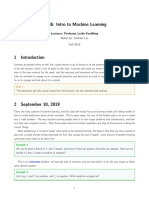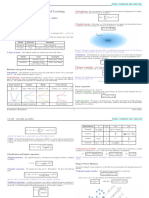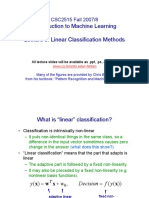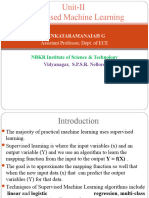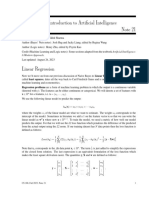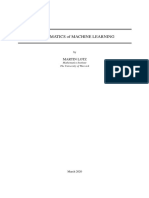0% found this document useful (0 votes)
9 views47 pagesClassification
The document provides an introduction to classification in machine learning, focusing on two-class classification problems. It discusses four classifiers: Gaussian Discriminant Analysis, Logistic Regression, k-nearest neighbors, and the Perceptron, detailing their models, assumptions, and parameter estimation methods. Key concepts such as likelihood, gradient descent, and the perceptron convergence theorem are also covered to illustrate the learning process in these classifiers.
Uploaded by
eswamCopyright
© © All Rights Reserved
We take content rights seriously. If you suspect this is your content, claim it here.
Available Formats
Download as PDF, TXT or read online on Scribd
0% found this document useful (0 votes)
9 views47 pagesClassification
The document provides an introduction to classification in machine learning, focusing on two-class classification problems. It discusses four classifiers: Gaussian Discriminant Analysis, Logistic Regression, k-nearest neighbors, and the Perceptron, detailing their models, assumptions, and parameter estimation methods. Key concepts such as likelihood, gradient descent, and the perceptron convergence theorem are also covered to illustrate the learning process in these classifiers.
Uploaded by
eswamCopyright
© © All Rights Reserved
We take content rights seriously. If you suspect this is your content, claim it here.
Available Formats
Download as PDF, TXT or read online on Scribd
/ 47



